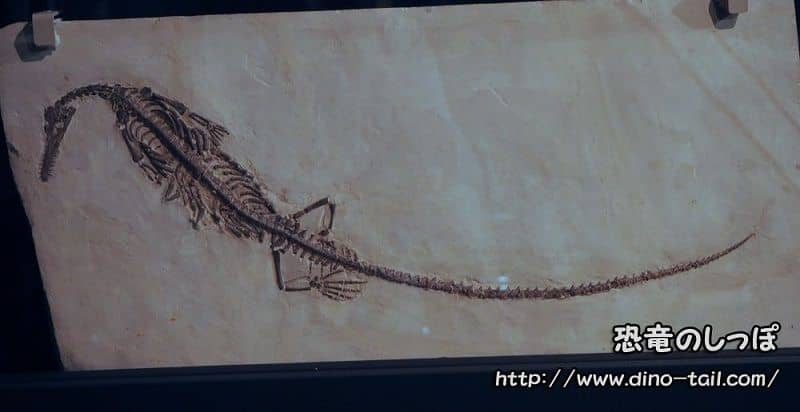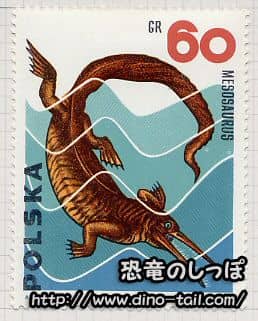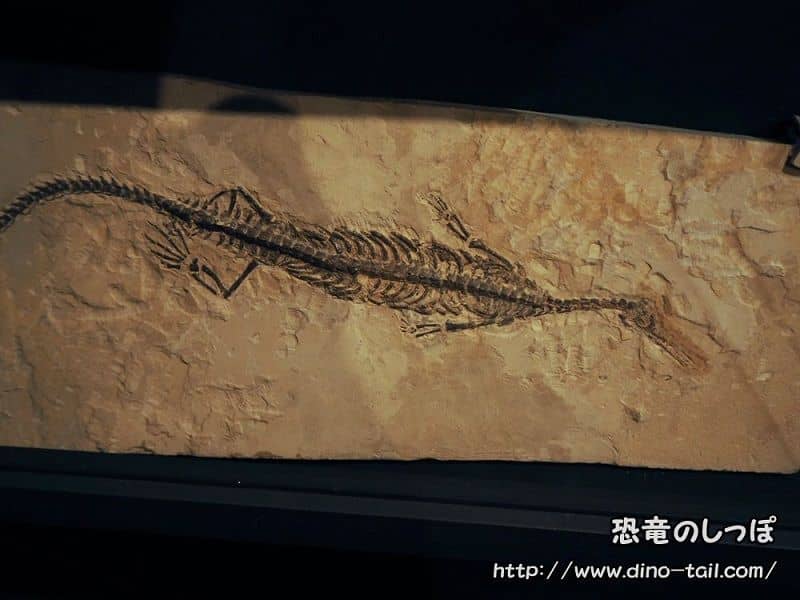About Mesosaurus
| Scientific Name (Genus) | Mesosaurus |
| Meaning of Name |
Intermediate lizard
mesos (intermediate) [Greek] - sauros (lizard) [Greek] |
| Classification | Sauropsida, Mesosauridae |
| Total Length | 40 - 100 cm |
| Diet | Carnivorous |
| Period | Early Permian |
| Sub-classification / Species Name | Mesosaurus tenuidens |
Features
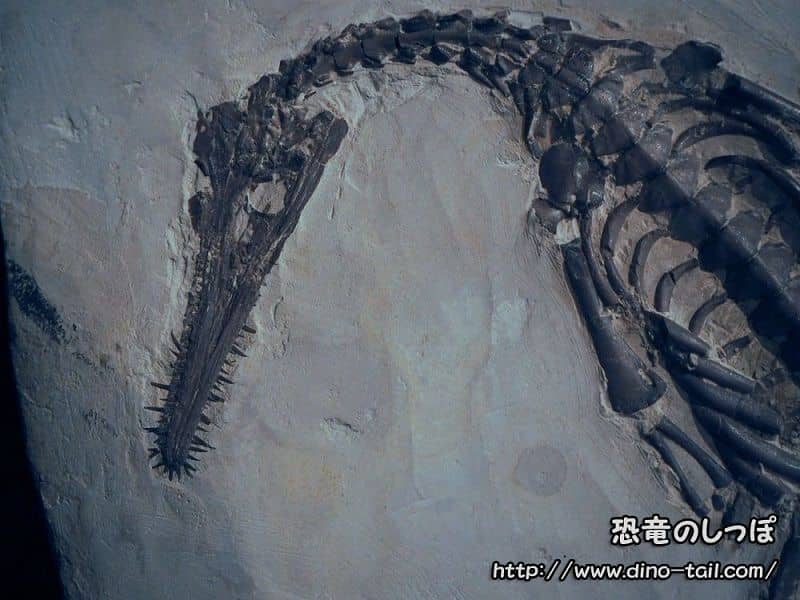
Mesosaurus was an aquatic reptile with a slender head that lived in the Early Permian (about 299 million to 280 million years ago). Based on sediments found with Mesosaurus fossils, it is thought to have lived in freshwater (swamps and lakes). However, in 2018, it was suggested that it could also move on land for short periods.
Its maximum length was about 1 meter. It swam skillfully in the water using its long, powerful tail and large hind feet, which are thought to have been webbed. Its bones were dense and heavy, like those of modern manatees ( pachyostosis ), and are thought to have functioned as "ballast" to reduce buoyancy and maintain stability in the water.
Also, its long jaws were lined with countless needle-like teeth, like a comb. These teeth may have been suitable not only for catching small crustaceans but also for filter-feeding, sucking in water with even smaller prey like plankton and filtering them out.
"Decisive Evidence" for Continental Drift
Mesosaurus fossils have only been found in southern South America and southern Africa, two continents now separated by the Atlantic Ocean. This fact is considered one of the strongest pieces of evidence for Alfred Wegener's theory of "continental drift."
The main reason for this is that Mesosaurus was a freshwater or brackish water creature . It is highly unlikely that these small reptiles, about 1 meter long, could have swum across the vast Atlantic Ocean. This strongly suggests that in the Permian period, when they lived, South America and Africa were a single, contiguous landmass (the supercontinent Pangaea).
The fossils of Mesosaurus are, in fact, evidence that the continents were once one.
Ovoviviparous
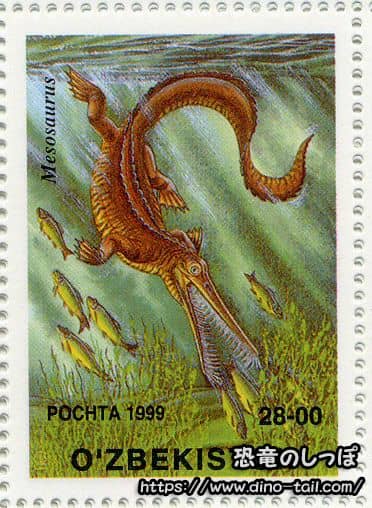
Embryo fossils have been discovered in Uruguay and Brazil. The embryos are not covered by a hard shell. It seems that Mesosaurus was "ovoviviparous," hatching inside the mother's body and being born as infants.
Mesosaurus Stamp and Fossil Gallery
